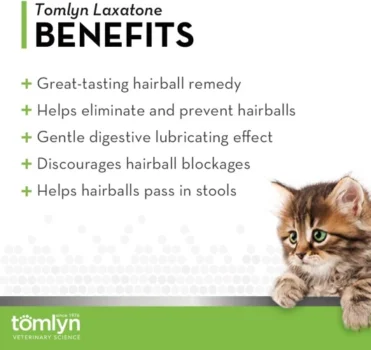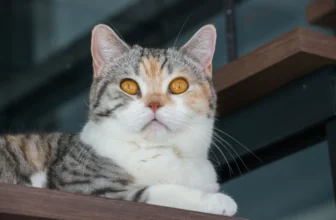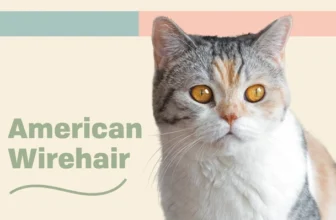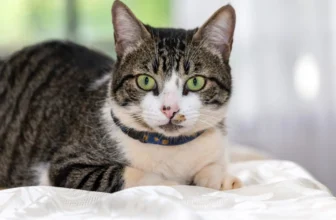As a proud owner of an American Wirehair, it can be concerning to see your feline friend struggle with hairballs. These pesky clumps of fur can be uncomfortable for your pet and potentially lead to serious health issues. While hairballs are a normal part of a cat’s grooming routine, it’s crucial to take preventive measures to keep your American Wirehair healthy and happy. In this article, we’ll explore what hairballs are, why American Wirehairs are susceptible to them, and most importantly, how to prevent them with practical tips and tricks. So, let’s dive in and learn how you can help relieve your American Wirehair’s hairball woes.
Understanding Hairballs

As a cat owner, it is essential to understand the potential health issues that your feline friend may face, and hairballs are one of them. Hairballs can be a common and uncomfortable problem for American Wirehairs. Hairballs occur when cats ingest their fur during their grooming routine, which the body can’t digest. This leads to hair accumulation in the stomach, which can cause digestive problems. If you’re concerned about your cat’s hairballs, keep reading to learn more about their causes and prevention techniques. Remember, regular veterinarian check-ups are an essential part of your American Wirehair’s overall health and well-being. Learn about the benefits of vet checkups for your American Wirehair here: Benefits of Vet Checkups for American Wirehairs.
What are Hairballs?
Hairballs are clumps of fur that cats naturally produce during grooming. American Wirehairs are no exception to this phenomenon. When a cat licks its fur, its rough, sandpaper-like tongue collects loose hair, which gets swallowed in the process. Some of this hair remains in the cat’s digestive tract and accumulates over time, forming matted wads of fur that the cat eventually regurgitates.
Here’s a table that explains some of the finer points about hairballs:
| Characteristic | Description |
|---|---|
| Physical Appearance | Small, cylindrical-shaped wads of matted fur. |
| Frequency | Occasional; up to a few times a month is considered normal. |
| Color | Typically dark brown or black due to the presence of bile. |
| Texture | Sticky and moist on the outside, dry and stiff on the inside. |
| Size | Varies depending on the cat; can range from a few centimeters to several inches in length. |
In some cases, hairballs can cause dental problems, ear infections, and GI issues if they become too large or are unable to pass through the digestive system. While hairballs may seem like a normal occurrence, it’s important to monitor your cat’s health and speak to a veterinarian if you notice any abnormal behavior or symptoms.
Now that we have a better understanding of what hairballs are and how they form, let’s explore some prevention techniques to help keep your American Wirehair healthy and hairball-free.
Why do American Wirehairs get Hairballs?
American Wirehairs get hairballs because of the way their tongue is designed. These cats have a rough tongue that is ideal for capturing and removing loose hair from their coat during grooming. However, the rough tongue can also lead to extensive hair ingestion. When your American Wirehair grooms themselves, they can inadvertently swallow large quantities of hair. This hair can then accumulate in their stomach and intestines, forming hairballs. There are several factors that could increase the likelihood of your American Wirehair developing hairballs. Here are some of them:
- Lack of grooming: If the cat doesn’t groom itself enough, there will be more hair on its coat, which means it is more likely to swallow hairballs during grooming.
- Dietary choices: Low-quality food or an improper diet means the cat’s digestive system may be less efficient, which could slow down the ability to pass hairballs.
- Dehydration: Cats need plenty of water to guarantee proper hydration and digestion. Without enough water, stools can become hard and dry, which could lead to hairball blockages.
- An unhealthy weight: Obesity can increase the frequency of hairballs in cats. Keeping cats at a healthy weight is always recommended, and it can improve their overall health and well-being.
By addressing these underlying issues, you can help prevent hairballs in your American Wirehair. If you need more information about addressing your cat’s health concerns, you can always check our articles on maintaining a healthy weight or managing allergies.
Prevention Techniques
When it comes to preventing hairballs in American Wirehairs, there are a variety of techniques you can use. By implementing a few simple changes to your cat’s routine, you can help reduce the amount of hairballs they experience. From regular grooming to dietary changes, there are several prevention techniques that can make a significant difference. Let’s dive into the details and explore some effective methods to help your American Wirehair stay hairball-free.
Regular Grooming
Grooming your American Wirehair cat regularly is one of the most effective ways to prevent hairballs. Regular grooming sessions will help remove loose hair before your cat has a chance to ingest it, reducing the chances of hairballs forming.
How often should you groom your American Wirehair cat?
It is recommended that you groom your American Wirehair cat at least two to three times a week to prevent hairballs. However, if your cat has a long, thick coat, it may require more frequent grooming sessions to keep it tangle-free.
What grooming tools should you use for your American Wirehair cat?
Invest in high-quality grooming tools that are specifically designed for cats, such as a slicker brush or a comb. A slicker brush is ideal for removing loose and shedding hair from your cat’s coat, while a comb can help detangle any mats or knots that have formed in the fur.
How to groom your American Wirehair cat?
To groom your American Wirehair cat, start by running a slicker brush gently over its coat, paying particular attention to areas where hair tends to clump, such as the back, hips, and under the legs. Make sure to brush in the direction of hair growth to avoid pulling the fur.
After brushing your cat’s coat, use a comb to work out any tangles or knots, starting at the tips of the fur and working your way up towards the base. Be gentle when combing out knots to avoid causing discomfort for your cat.
Finally, wipe your cat down with a damp cloth to remove any loose hair, and offer your cat a treat or toy to reward it for its good behavior during the grooming session.
By incorporating regular grooming sessions into your cat’s care routine, you can help prevent hairballs and keep your American Wirehair cat looking and feeling its best.
| BENEFITS OF REGULAR GROOMING | GROOMING TOOLS | GROOMING TIPS |
|---|---|---|
| Removes loose hair | Slicker brush | Brush in the direction of hair growth |
| Prevents hairballs | Comb | Start at the tips of the fur and work your way up towards the base |
| Reduces shedding | Damp cloth | Be gentle when combing out knots |
Dietary Changes
One of the most effective ways of preventing hairballs in American Wirehairs is by making certain dietary changes. Here are some dietary tips you should follow:
- Increase Fiber in their Diet: A diet that is high in fiber can be of great help in preventing hairballs. This is because it helps to promote good digestion and prevents hair from getting trapped in the digestive tract, which often leads to hairballs. Consider incorporating fiber-rich foods like pumpkin, zucchini, and beans into your Wirehair’s diet.
- Feed your American Wirehair high-quality cat food: The quality of the cat food you feed your American Wirehair matters a lot when it comes to preventing hairballs. Make sure you are giving your pet high-quality cat food that is rich in nutrients. This will not only promote good overall health but also help keep their coat healthy, which, in turn, helps to reduce shedding.
- Add digestive aids to their Diet: There are many digestive aids available in the market that can help in breaking down hair and preventing hairballs. Some of the most effective aids include probiotics and digestive enzymes. You can add these to your Wirehair’s diet to help improve their digestive health and prevent hairballs.
- Limit their Intake of Hairball-Inducing Foods: Some foods can increase the likelihood of hairballs in your American Wirehair. Foods like fish and liver are known to cause hairballs, so it is essential to limit the intake of these foods. Also, cooked bones and treats high in fat may also lead to hairballs, so be mindful when giving your pets these treats.
By making these dietary changes, you can significantly reduce the frequency of hairballs in your American Wirehair. Remember to choose high-quality cat food and add fiber-rich and digestive aids foods to their diet. By maintaining a healthy and balanced diet for your pet, you ensure that the chances of hairballs are kept to a minimum.
Plenty of Water
Water is an essential requirement for a healthy lifestyle, and the same goes for preventing hairballs in American Wirehairs. As they tend to groom themselves frequently, their digestion gets compromised leading to hairball formation. Thus, it is crucial to keep them hydrated to avoid any blockages and prevent hairball formation.
Here are some tips to ensure your American Wirehair gets plenty of water:
| Tip | Description |
|---|---|
| Keep the water bowl clean | Avoid using plastic bowls and clean the bowl every day. Use stainless steel or ceramic bowls instead. |
| Add ice cubes | If your American Wirehair is not fond of warm water, then adding some ice cubes can make it more enticing for them. |
| Invest in a pet fountain | Many American Wirehairs prefer moving and fresh water, and a pet fountain can provide a steady flow of water, keeping them hydrated throughout the day. |
| Introduce low sodium broth | If your American Wirehair does not drink much water, then you can introduce low sodium broth to their food which will increase their water intake. |
| Monitor water intake | Keep an eye on your cat’s water intake and make sure they drink enough water throughout the day. If you notice any changes in their drinking habit, consult with your veterinarian. |
Keeping your American Wirehair hydrated is vital for their overall health and well-being. So, make sure to follow these tips to prevent hairball formation and ensure your cat leads a happy and healthy life.
Behavioral Changes
As with any unwanted behavior, it’s important to address the root cause of hairballs in American Wirehairs. In some cases, behavioral changes may be necessary to help prevent the problem. Here are some tips to consider:
- Encourage Exercise: A sedentary lifestyle can contribute to hairball formation, as cats may not be moving around enough to help the hair pass through their digestive system. Provide plenty of toys and try to engage your cat in daily play sessions to encourage exercise.
- Stress Reduction: Stress can cause excessive grooming, which in turn can lead to hairballs. Providing a calm environment for your cat can help reduce stress levels. Consider providing hiding spots, vertical spaces to climb and relax, and spending extra time with your cat to reduce anxiety.
- Litter Box Maintenance: Cats are notoriously clean animals and may develop behaviors such as over-grooming if their litter box is not clean enough. Make sure to scoop the litter box daily and clean it regularly.
- Regular Vet Check-Ups: If your cat is experiencing frequent hairballs, it’s important to have them checked by a veterinarian. Frequent hairballs can be a sign of an underlying medical condition, such as gastrointestinal issues, that may require medical intervention.
By making these behavioral changes, you can help prevent hairball formation in your American Wirehair and improve their overall health and happiness.
Add Hairball Remedies to Diet
If your American Wirehair is prone to hairballs, adding hairball remedies to their diet is an effective way to prevent them. Here are some highly recommended hairball remedies for your furry friend:
- Pumpkin: Pumpkin is rich in fiber and helps in the smooth passage of hair through the digestive system. It can be added to your cat’s diet either canned or cooked. A tablespoon of pumpkin puree mixed with food, once a day, can do wonders for your cat’s digestion.
- Olive Oil: Olive oil is a great natural remedy for hairballs. Not only does it lubricate the digestive system but it is also a good source of vitamins E and K. Add a teaspoon of olive oil to your cat’s food 2-3 times a week for best results.
- Catnip: Catnip can help in promoting digestion and reducing hairballs. Sprinkle some catnip on your cat’s food and watch them enjoy their meal while preventing hairballs.
- Digestive Enzymes: Adding digestive enzymes to your cat’s diet can help break down proteins, fats, and carbohydrates and prevent the formation of hairballs. These enzymes can be added to your cat’s food once a day or as directed by your veterinarian.
- Wet Food: Introducing wet food to your cat’s diet can also help promote digestion and reduce the formation of hairballs. Wet food helps in keeping your cat hydrated and promotes the smooth passage of hair through the digestive system.
Note that it is important to consult your veterinarian before adding anything new to your cat’s diet. These hairball remedies are supplements and should not replace any prescribed medication or treatment. By adding these remedies to your cat’s diet, along with the other prevention techniques, you can help ensure a healthy and happy life for your American Wirehair.
Conclusion
In conclusion, hairballs are a common issue among American Wirehairs and can lead to discomfort and health problems. However, by implementing preventative measures such as regular grooming, dietary changes, providing plenty of water, and behavioral changes, owners can reduce the occurrence of hairballs in their furry friends. Additionally, adding hairball remedies to a cat’s diet can further aid in the reduction of hairballs. It is important to keep in mind that if a hairball becomes too large or causes a blockage in the cat’s system, it may require medical attention. Therefore, it is crucial to monitor your cat’s behavior and consult with a veterinarian if necessary. By taking proactive steps, owners can ensure their American Wirehairs lead healthy, happy lives free of hairballs. So, make sure to keep these tips and tricks in mind to maintain a smooth and healthy coat for your American Wirehair!
Frequently Asked Questions
How often do American Wirehairs get hairballs?
American Wirehairs are prone to hairballs due to their thick, coarse fur. Hairballs can occur as often as every few weeks.
Are hairballs dangerous for American Wirehairs?
Hairballs can cause blockages in a cat’s digestive system, leading to serious, even life-threatening, complications. It’s important to take steps to prevent hairballs in your American Wirehair.
How do I tell if my American Wirehair has a hairball?
Symptoms of a hairball include vomiting, dry heaving, and constipation. If you notice any of these symptoms, it’s important to take your cat to the vet.
Can I prevent hairballs through diet?
Yes, a high-fiber diet can help prevent hairballs by aiding in digestion and keeping your cat regular.
What types of brush should I use for grooming?
A slicker brush and a comb are recommended for grooming an American Wirehair.
When should I groom my American Wirehair?
It’s important to groom your American Wirehair at least once a week to prevent hairballs and matting.
How can I encourage my American Wirehair to drink more water?
One way to encourage your cat to drink more water is to use a fountain-style water dish. Many cats prefer running water to still water.
What are some behavioral changes I can make to prevent hairballs?
Encouraging your American Wirehair to be more active can help prevent hairballs by promoting digestion and shedding. Provide your cat with toys and playtime to keep them moving.
Are there any natural remedies for hairballs?
Some natural remedies for hairballs include adding pumpkin or coconut oil to your cat’s diet. These ingredients can help lubricate the digestive tract and promote regular bowel movements.
Is it ever too late to prevent hairballs in my American Wirehair?
It’s never too late to start preventing hairballs in your American Wirehair. While it’s important to start early, implementing prevention techniques can always benefit your cat’s health and well-being.







